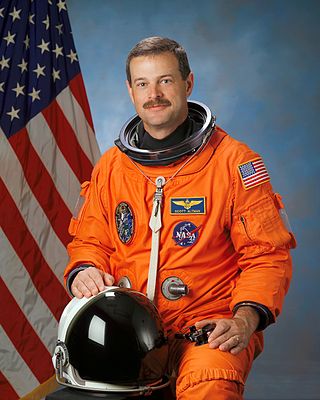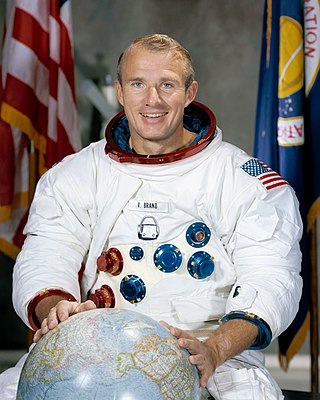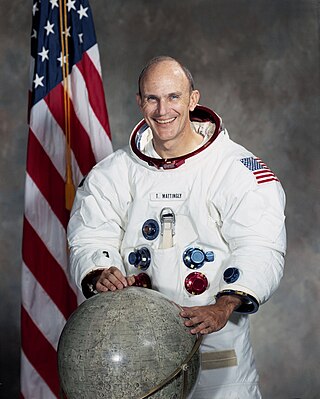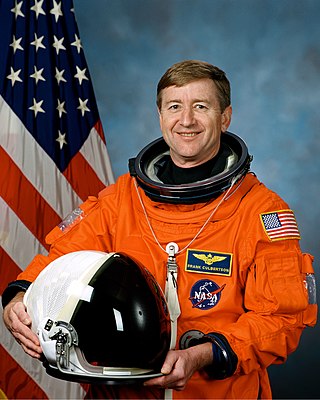
Scott Douglas "Scooter" Altman is a retired United States Navy Captain and naval aviator, engineer, test pilot and former NASA astronaut. He is a veteran of four Space Shuttle missions. His fourth mission on STS-125 was the last servicing mission to the Hubble Space Telescope. As of November 2022, he is the president of the Space operating group for ASRC Federal.

James Donald "Wxb" Wetherbee, is a retired United States Navy officer and aviator, test pilot, aerospace engineer, and NASA astronaut. He is a veteran of six Space Shuttle missions and is the only American to have commanded five spaceflight missions.

Terrence Wade Wilcutt is a United States Marine Corps officer and a former NASA astronaut. He is a veteran of four Space Shuttle missions. Wilcutt was NASA's Chief of Safety and Mission Assurance, until his retirement from NASA in December 2020.

Henry Warren Hartsfield Jr. was a United States Air Force Colonel and NASA astronaut who logged over 480 hours in space. He was inducted into the United States Astronaut Hall of Fame in 2006.

Michael Lloyd Coats is a former NASA astronaut, raised in Riverside, California. From December 2005 to December 2012, he served as Director of the Johnson Space Center in Houston, Texas.

Richard Noel "Dick" Richards, , is a retired American naval officer and aviator, test pilot, chemical engineer, and a former NASA astronaut. He flew aboard four Space Shuttle missions in the 1980s and 1990s.

Vance DeVoe Brand is an American naval officer, aviator, aeronautical engineer, test pilot, and NASA astronaut. He served as command module pilot during the first U.S.-Soviet joint spaceflight in 1975, and as commander of three Space Shuttle missions.

Robert Franklyn "Bob" Overmyer was an American test pilot, naval aviator, aeronautical engineer, physicist, United States Marine Corps officer, and USAF/NASA astronaut. Overmyer was selected by the Air Force as an astronaut for its Manned Orbiting Laboratory in 1966. Upon cancellation of the program in 1969, he became a NASA astronaut and served support crew duties for the Apollo program, Skylab program, and Apollo-Soyuz Test Project. In 1976, he was assigned to the Space Shuttle program and flew as pilot on STS-5 in 1982 and as commander on STS-51-B in 1985. He was selected as a lead investigator into the Space Shuttle Challenger disaster in 1986, retiring from NASA that same year. A decade later, Overmyer died while testing the Cirrus VK-30 homebuilt aircraft.

Richard Oswalt Covey is a retired United States Air Force officer, former NASA astronaut, and a member of the United States Astronaut Hall of Fame.

Norman Earl Thagard, is an American scientist and former U.S. Marine Corps officer and naval aviator and NASA astronaut. He is the first American to ride to space on board a Russian vehicle, and can be considered the first American cosmonaut. He did this on March 14, 1995, in the Soyuz TM-21 spacecraft for the Russian Mir-18 mission.

Robert Lee "Hoot" Gibson, , is a former American naval officer and aviator, test pilot, and aeronautical engineer. A retired NASA astronaut, he also served as Chief of the Astronaut Office from 1992 to 1994. Today Gibson is active as a professional pilot, racing regularly at the annual Reno Air Races. He was inducted into the U.S. Astronaut Hall of Fame in 2003 and the National Aviation Hall of Fame in 2013, and has received several military decorations throughout his career.

Margaret Rhea Seddon is an American surgeon and retired NASA astronaut. After being selected as part of the first group of astronauts to include women in 1978, she flew on three Space Shuttle flights: as a mission specialist on STS-51-D and STS-40, and as a payload commander for STS-58, accumulating over 722 hours in space. On these flights, she built repair tools for a US Navy satellite and performed medical experiments.

David Mathieson Walker, , was an American naval officer and aviator, fighter pilot, test pilot, and a former NASA astronaut. He flew aboard four Space Shuttle missions in the 1980s and 1990s.

Thomas Kenneth Mattingly II was an American aviator, aeronautical engineer, test pilot, rear admiral in the United States Navy, and astronaut who flew on Apollo 16 and Space Shuttle STS-4 and STS-51-C missions.

Michael Allen Baker is a retired captain in the United States Navy, former NASA astronaut, and the International Space Station Program Manager for International and Crew Operations, at NASA's Johnson Space Center. He is responsible for the coordination of program operations, integration and flight crew training and support activities with the International Partners.

Robert Donald Cabana is a former Associate Administrator of the National Aeronautics and Space Administration (NASA), NASA astronaut and non-flight-eligible management astronaut), and is a veteran of four Space Shuttle flights. He served as Chief of the Astronaut Office from 1994 to 1997 and as director of the John F. Kennedy Space Center from 2008 to 2021. He is also a former naval flight officer and naval aviator in the United States Marine Corps.

Frank Lee Culbertson Jr. is an American former naval officer and aviator, test pilot, aerospace engineer, NASA astronaut, graduate of the US Naval Academy, and member of the United States Astronaut Hall of Fame. He served as the commander of the International Space Station for almost four months in 2001 and was the only U.S. citizen not on Earth when the September 11 attacks occurred.

John Michael "Mike" Lounge was an American engineer, a United States Navy officer, a Vietnam War veteran, and a NASA astronaut. A veteran of three Space Shuttle flights, Lounge logged over 482 hours in space. He was a mission specialist on STS-51-I (1985) and STS-26 (1988) and was the flight engineer on STS-35 (1990).

Bryan Daniel O'Connor is a retired United States Marine Corps Colonel and former NASA astronaut. He was inducted into the United States Astronaut Hall of Fame in 2008.

Pierre Joseph Thuot is a retired United States Navy captain and NASA astronaut. He went into space three times, spending over 650 hours in space, including over 15 hours in three space walks. He is a former U.S. record holder for time spent on one spacewalk, and participated in the first three-person spacewalk.




















